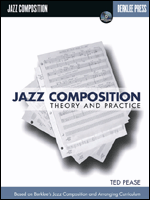I set out to transcribe John Coltrane's 26-2 solo this morning. Before I began I made a list of questions I hoped to have answered from the transcription. Here is the list:
- What is the ratio of obvious patterns to simple, melodic material?
- How often does he switch patterns? (At the end of each phrase? Within phrases?)
- How many obvious patterns are in his vocabulary?
- Is his vocabulary more or less the same as what he used on the Giant Steps recording (which I transcribed, analyzed and learned many years ago, as a student)?
- What does he use for "melodic material" to contrast patterns? Is it obvious how this material was derived?
- Are his phrase lengths more or less symmetrical? Does he pause/breathe in specific spots within the form, repeatedly?
- Does measure 9 (where there is a slight deviation from the original progression) present any noticeable problems for him, compared to measure 5?
I finished the transcription, but haven't done a thorough analysis yet. I must admit that I was really surprised with what I saw as the solo materialized on paper. It appears that his approach to soloing on 26-2 isn't as formulaic, rigid, and pattern oriented as what he played on the Giant Steps album, recorded about a year and a 1/2 prior. It is quite astonishing, not to mention inspiring, to think that John Coltrane's playing evolved to such a great extent over such a short period.
My transcription ended up being eight pages long, so I will post half today and half tomorrow. Either tomorrow or sometime shortly, I will share some analytical observations.
For those of you with an interest in the transcription process, you may wish to read my article, "How To Transcribe Music", which is posted in the Jazz Education portion of my website.
You may wish to click on the individual pages to make them larger and more legible. The recorded solo is posted on YouTube, should you wish to follow along. Here is the link: http://youtu.be/H_uO_UbBEAg
Enjoy!
My transcription ended up being eight pages long, so I will post half today and half tomorrow. Either tomorrow or sometime shortly, I will share some analytical observations.
For those of you with an interest in the transcription process, you may wish to read my article, "How To Transcribe Music", which is posted in the Jazz Education portion of my website.
You may wish to click on the individual pages to make them larger and more legible. The recorded solo is posted on YouTube, should you wish to follow along. Here is the link: http://youtu.be/H_uO_UbBEAg
Enjoy!
























